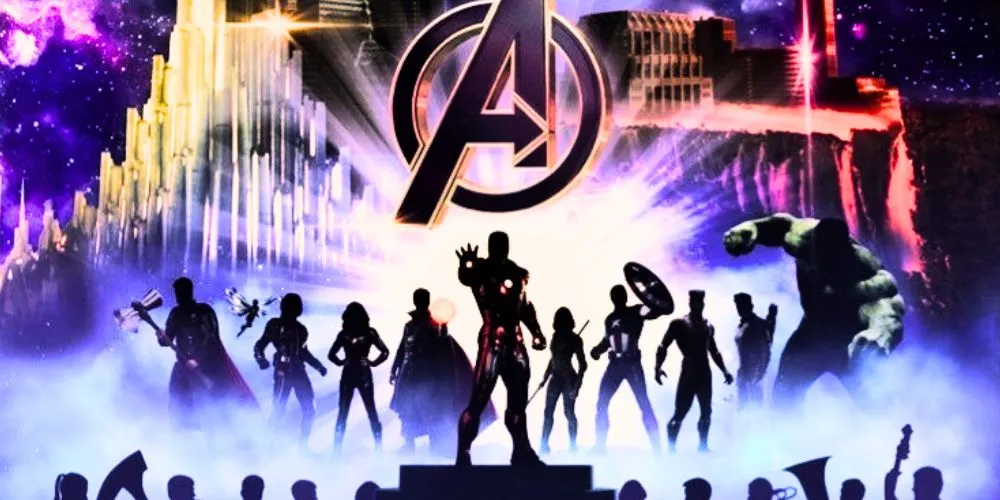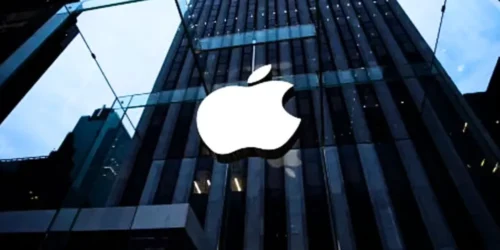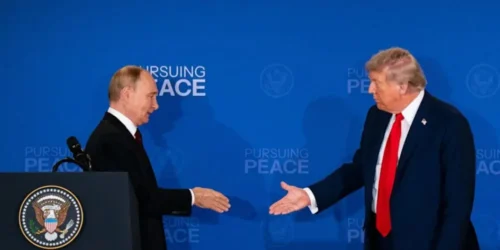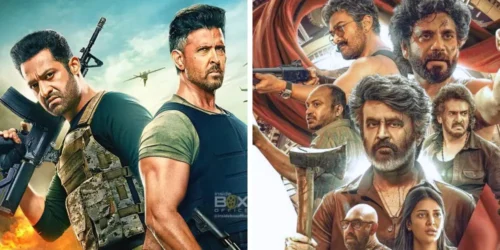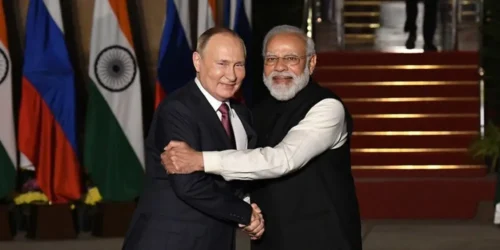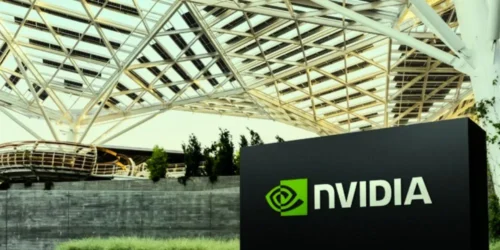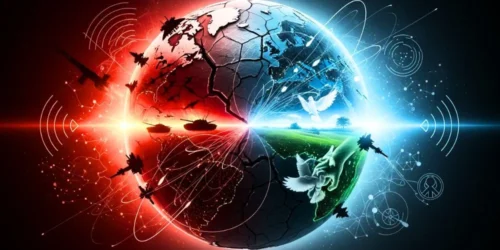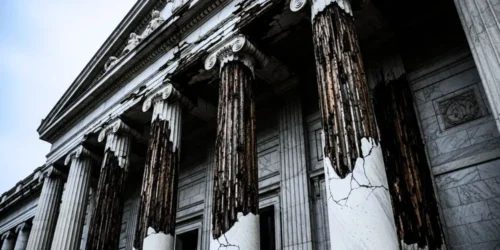It began with a whisper—a secret shared in the dark. The year is 2008. The credits roll on Iron Man, a film that had no right to be as good as it was. Most of the audience shuffles out, sticky with soda and buzzing from the rock-and-roll energy of a surprisingly brilliant movie. But some of us stay. We stay because we’ve heard the rumors, the whispers on the nascent internet forums. We wait.
And then, it happens. Tony Stark, billionaire playboy, returns to his Malibu mansion to find a figure lurking in the shadows. It’s Samuel L. Jackson, clad in a leather trench coat and an eyepatch. “I’m here to talk to you about the Avenger Initiative,” he says, his voice dripping with gravitas.
The theater didn’t erupt. It gasped. It was a collective, knowing intake of breath. For the comic book faithful, it was a sacred text brought to life. For the uninitiated, it was a jolt of pure intrigue. In that single, audacious post-credits scene, producer Kevin Feige and director Jon Favreau didn’t just tease a sequel. They planted a flag. They made a promise. They told us, “This isn’t just a movie. This is the beginning of a universe.”
In the decade and a half since that moment, that promise has metastasized into the single most dominant cultural and economic force in global entertainment. The superhero movie, once a niche genre prone to campy embarrassments and occasional flashes of brilliance, has conquered the world. It has rewritten the rules of Hollywood, redefined the blockbuster, and created a new kind of mythology for the 21st century. The Marvel Cinematic Universe (MCU), in particular, executed a creative and commercial gambit of such unprecedented scale and success that it now stands as one of the most remarkable achievements in pop culture history.
But empires rise, and empires fall. Today, the genre finds itself at a precarious crossroads. A sense of fatigue has set in. The once-flawless formula shows signs of strain. The box office numbers, once as reliable as gravity, have begun to wobble. The cultural conversation has shifted from breathless anticipation to critical examination.
This is the story of that rise and the beginning of its reckoning. It is a case study of a genre that flew closer to the sun than any before it. We will dissect the alchemical formula that turned B-list heroes into global icons, explore the peak of its power when it held the entire world captive, and investigate the cracks now appearing in its adamantium armor. This is not just a story about men and women in capes. It is a story about storytelling itself—how a new kind of narrative was forged, how it captured the collective imagination, and what happens when the magic starts to fade.
The Genesis – Building a Universe from the Scrap Pile
To understand the miracle of 2008, you have to understand the landscape that preceded it. The superhero film was not a wasteland, but it was a deeply fractured and inconsistent kingdom. For every masterpiece like Sam Raimi’s Spider-Man 2 (2004), a film that perfectly captured the torment and triumph of its hero, there was a Catwoman (2004). For every gritty, game-changing reboot like Christopher Nolan’s Batman Begins (2005), there was a bloated, joyless Superman Returns (2006).
These films existed as isolated fiefdoms. Sony had Spider-Man. 20th Century Fox had the X-Men and the Fantastic Four. Warner Bros. held the keys to the DC kingdom with Superman and Batman. The films were franchises, self-contained sagas that, at best, referenced their sequels. The idea of them crossing over, of creating a shared world on screen, was a nerd’s fantasy, a logistical and legal nightmare that no studio dared to attempt.
This is where Marvel Studios entered the picture, not as a titan, but as an underdog. In the late 1990s, Marvel Comics had flirted with bankruptcy. To stay afloat, they sold off the film rights to their most prized assets, their A-list characters. Spider-Man and the X-Men were the crown jewels, the characters that had defined the company for decades. By the mid-2000s, when a newly formed Marvel Studios decided to make its films, they were left with what many considered the B-team.
Their roster included a thunder god who spoke in faux-Shakespearean English, a man frozen in ice for 70 years wrapped in an American flag, and a Hulk who had already starred in a thoughtful but commercially underwhelming film. And their first bet, the character they chose to build their entire universe upon, was Iron Man.
Today, it’s hard to imagine, but at the time, this was a monumental gamble. Iron Man was not a household name. To the general public, he was a second-stringer, a C-lister at best. He was an arms-dealing industrialist, a hero whose powers came from a suit of armor—a far cry from the relatable everyman tragedy of Peter Parker or the archetypal alien grace of Superman.
The gamble extended to everyone involved. They hired Jon Favreau, a director best known for the comedy Elf and the indie hit Swingers. And for their leading man, they chose Robert Downey Jr. At the time, RDJ was one of the most gifted actors of his generation. Still, he was also considered a Hollywood pariah, a brilliant talent whose career had been derailed by addiction and legal troubles. He was seen as a massive insurance risk, the opposite of a safe bet to launch a billion-dollar franchise.
Yet, this collection of perceived liabilities created a perfect, alchemical reaction. Favreau, with his roots in improvisational comedy, fostered a loose, collaborative set. He threw out chunks of the script and encouraged Downey to play, to invent, to inhabit the character. And Downey, in a career-defining turn, didn’t just play Tony Stark. He fused his narrative of public downfall and hard-won redemption with Stark’s. The wit, the arrogance, the charisma, the barely-concealed vulnerability—it was impossible to see where the actor ended and the character began.
The film they created, Iron Man, was a lightning strike. It was witty, stylish, and impossibly cool. It rejected the brooding seriousness of Nolan’s Batman and the earnest angst of Raimi’s Spider-Man. It was a superhero movie that felt like a rock concert. It made you like the man in the suit as much as, if not more than, the suit itself. And it ended not with the hero hiding his identity, but with Tony Stark striding up to a podium and declaring to the world, “I am Iron Man.” It was an inversion of the genre’s most sacred trope, a signal that this was something different.
But the true genius was that post-credits scene. That moment with Nick Fury wasn’t just a fun easter egg. It was a contract with the audience. It transformed a passive viewing experience into an active one. It told us that our knowledge and investment would be rewarded. It turned the film from a finished product into the first chapter of an unfolding saga. Marvel wasn’t just making movies; they were building a world, and they were inviting us to come and live in it. They took the scraps from their garage and, like Tony Stark himself, they built something that could fly.
The Alchemy – Deconstructing the Marvel Formula
The success of Iron Man was the spark, but turning that spark into the roaring bonfire of the Marvel Cinematic Universe required a formula—a repeatable, adaptable, and ruthlessly effective method of storytelling. The term “Marvel formula” is often used dismissively by critics, suggesting a bland, cookie-cutter approach. But to dismiss it is to ignore the sophisticated alchemy at its core. It was a formula born of necessity, refined through trial and error, and perfected by a singular guiding hand.
The World’s Most Expensive Television Show
The single most important innovation of the MCU was its structure. Kevin Feige, the architect of it all, did not model his universe on a series of movie franchises. He modeled it on television.
Think of it this way: each “Phase” of the MCU is a season of television. Each film is an episode. Some episodes, like Iron Man or Captain America: The First Avenger, focus on a single main character, developing their arc. Other episodes, like Thor, introduce new players and expand the world. The crossover event films, The Avengers, are the explosive season finales, where all the separate storylines converge, pay off, and create a new status quo for the next season.
This structure had profound effects. It meant that no film existed in a vacuum. The character development was cumulative. Tony Stark’s journey from arrogant industrialist in Iron Man to a man who has PTSD after the Battle of New York in Iron Man 3 is a multi-episode character arc. The burgeoning friendship and eventual tragic schism between Steve Rogers and Tony Stark isn’t the story of one film; it’s a slow-burn tragedy told across a half-dozen installments.
This “long-form storytelling” created an unprecedented level of audience investment. We weren’t just showing up for a two-hour spectacle; we were checking in with characters we had grown to know over the years. This is the power of television, the bond viewers form with the cast of Friends or The Sopranos. Marvel simply did it on a cinematic scale with a budget of billions. It also created the “homework” problem that would later plague the franchise, but in its golden age, it was the secret ingredient that made the world feel lived-in, coherent, and consequential.
The Unifying Power of the Quip
How do you take a Norse god, a World War II super-soldier, a gamma-radiated monster, and a tech billionaire and make them feel like they belong in the same room? This was Marvel’s central tonal challenge. The solution? Humor.
The “Marvel quip”—the witty, often self-deprecating one-liner delivered in the face of certain doom—became the franchise’s signature. It was a brilliant tonal lubricant. It could deflate pomposity, preventing characters like Thor from becoming ridiculous. It could provide a moment of levity in the middle of a cataclysmic battle, keeping the experience fun rather than grueling. Most importantly, it grounded the fantastical. When Hawkeye, a man with a bow and arrow, stands amidst an alien invasion alongside a god and a monster and quips, “You see this? You see what I’m working with?” it makes the absurd feel relatable.
This comedic sensibility, largely inspired by the Joss Whedon-penned script for The Avengers, became the baseline frequency of the MCU. It allowed the franchise to genre-hop with remarkable dexterity. Captain America: The Winter Soldier could be a 1970s-style paranoid political thriller. Guardians of the Galaxy could be a space opera comedy. Ant-Man could be a heist film. But they all felt like they belonged to the same universe because they all spoke the same witty, accessible language.
Casting is Character
After the lightning-in-a-bottle success of Robert Downey Jr., Marvel learned its most valuable lesson: cast the personality, not just the movie star. They repeated the trick again and again. Could anyone else have captured the earnest, old-fashioned decency of Steve Rogers like Chris Evans? Or the roguish charm of Star-Lord, like Chris Pratt? Or the regal arrogance and hidden pain of Tho, like Chris Hemsworth?
Marvel’s casting directors, Sarah Finn in particular, demonstrated an uncanny ability to find actors who didn’t just play their characters but embodied their essence. This created an authenticity that no amount of CGI could replicate. It ensured that even when the plots became convoluted or the villains were underdeveloped (a frequent and valid criticism of the early phases), the audience always had a core group of charismatic, compelling characters to latch onto. We came for the spectacle, but we stayed for the people.
The Feige Factor – The Benevolent Showrunner
Every great television show has a showrunner, a single creative authority who holds the entire vision in their head. For the MCU, that person is Kevin Feige. A lifelong comic book fan with an encyclopedic knowledge of Marvel lore, Feige was the universe’s master architect, its benevolent dictator.
He was the one who insisted on that post-credits scene in Iron Man. He was the one who plotted out the phases, who knew where the story was going years in advance. He managed a sprawling stable of directors, giving them enough creative freedom to put their stamp on a film while ensuring it adhered to the overarching narrative and tone of the universe. When director Edgar Wright departed Ant-Man over creative differences, it was a clear signal: the universe came first.
This centralized control provided the MCU with its greatest strength and the single biggest advantage it had over its rivals, particularly the early DC Extended Universe. While Warner Bros. struggled with competing visions and course-corrected wildly from film to film, the MCU had a steady hand on the tiller. Feige’s vision gave the universe its remarkable consistency, turning a high-wire creative experiment into a reliable, well-oiled machine.
The Apex – The Infinity Saga’s Perfect Payoff
If the MCU were a television show, then Avengers: Infinity War and Avengers: Endgame would be its series finale. This wasn’t just a two-part movie event; it was the culmination of 22 films and a decade of storytelling. It was a cultural event on a scale that is difficult to comprehend, the kind of monocultural moment that we were told no longer existed in our fractured media landscape.
The genius of the finale began with its villain. For years, Marvel had been criticized for its “villain problem”—a string of forgettable, one-off antagonists. Thanos was different. Teased in the background for six years, he was the Big Bad whose presence loomed over the entire saga. And when he finally took center stage in Infinity War, he was not a cackling megalomaniac. The Russo brothers and writers Christopher Markus and Stephen McFeely crafted a villain with a clear, albeit horrific, ideology. In his twisted mind, Thanos was the hero of the story, bringing balance to a universe suffering from overpopulation. He was a philosophical zealot, and this gave him a gravitas that made him a worthy adversary for the combined might of Earth’s heroes.
Then came the audacity of Infinity War’s ending. The villain wins. In a stunning, gut-wrenching sequence, Thanos assembles all six Infinity Stones, snaps his fingers, and succeeds in his mission. One by one, our heroes turn to dust. The young, hopeful Spider-Man dissolving in Tony Stark’s arms, pleading, “I don’t want to go,” was a moment of collective trauma. The film ended on a note of absolute despair, with the surviving heroes broken and defeated. It was a cliffhanger that defied every convention of the summer blockbuster. It left audiences stunned, heartbroken, and utterly captivated. The year-long wait for Endgame was filled with a fever pitch of global speculation, fan theories, and anticipation that no marketing campaign could ever buy.
Avengers: Endgame delivered the payoff. It was not a perfect film from a plot perspective—the time travel logic is messy at best—but that didn’t matter. It was a perfect film emotionally. The entire three-hour runtime was an exercise in catharsis, meticulously engineered to reward the audience’s decade-long investment.
The film is a symphony of earned moments. The quiet grief of the first act. The desperate hope of the “time heist.” And then, the explosive final battle, a sequence filled with moments that sent theaters into delirium. Captain America, deemed worthy, finally wielded Thor’s hammer, Mjolnir. The portals open as every hero who had turned to dust returns for the final fight, signaled by Sam Wilson’s voice in Cap’s ear: “On your left.” And the final, perfect bookend: Tony Stark, the man who started it all, making the ultimate sacrifice, echoing his iconic line from the first film with a final, defiant “I am Iron Man.”
Endgame shattered every box office record imaginable, briefly becoming the highest-grossing film of all time. But its success was not just financial. It was emotional. It was a shared experience. It was the satisfying conclusion to the most ambitious, long-form narrative experiment in cinema history. The promise made in that dark theater in 2008 had been fulfilled, beyond anyone’s wildest dreams. The superhero genre was no longer a genre. It was the center of popular culture. It had reached the summit.
The Hangover – Life After the Snap
The problem with reaching the summit is that the only way to go is down. After the perfect, definitive conclusion of Endgame, the MCU faced an existential question: What now? How do you follow up a perfect ending?
The post-Endgame era, dubbed the “Multiverse Saga,” has been defined by this challenge, and the results have been decidedly mixed. The once-invincible Marvel machine has started to sputter, facing a complex set of internal and external pressures that have led to a palpable sense of “superhero fatigue” among audiences and critics.
The Anchor Void
The Infinity Saga was built on the foundation of its trinity: Iron Man, Captain America, and Thor. The emotional core of the universe resided in the arcs of these characters, portrayed by actors who had become synonymous with their roles. Endgame wrote two of them out of the story. The departures of Robert Downey Jr. and Chris Evans left an emotional and charismatic vacuum that has proven impossible to fill.
The new generation of heroes introduced in Phases Four and Five—Shang-Chi, the Eternals, Ms. Marvel—are compelling in their own right, but they have not yet forged the same deep, decade-long connection with the audience. The universe now feels diffuse, a sprawling ensemble cast without a clear center. There is no central figure whose personal journey anchors the cosmic stakes.
The Curse of Content and the Homework Problem
The launch of the Disney+ streaming service in 2019 was both a blessing and a curse for the MCU. It provided a new platform for telling different kinds of stories and fleshing out supporting characters in shows like WandaVision and Loki. WandaVision, in particular, was a brilliant, formally inventive exploration of grief that demonstrated the creative potential of the new medium.
However, the sheer volume of content quickly became overwhelming. Suddenly, to understand the plot of a new movie like Doctor Strange in the Multiverse of Madness, you needed to have watched WandaVision. To understand The Marvels, you needed to have seen WandaVision, Ms. Marvel, and Secret Invasion. The shared secret that once felt like a fun, inclusive club now felt like mandatory homework. The barrier to entry for casual fans became dauntingly high. The interconnected universe, once the MCU’s greatest strength, became a narrative straitjacket, alienating the very audience it had worked so hard to cultivate.
Formula Fatigue and the VFX Crisis
The Marvel formula, once a refreshing tonic, has begun to taste stale to many. The reliance on quippy humor, the third-act CGI battles against bland villains, the familiar story beats—it all started to feel predictable. Films began to look and feel the same, a phenomenon critics labeled the “MCU house style.” A growing, behind-the-scenes crisis in the visual effects industry exacerbated this.
The relentless demand for a constant stream of high-CGI content for both film and television placed an unsustainable strain on VFX houses. Stories emerged of impossible deadlines, poor working conditions, and rushed, unfinished work. The result became visible on the screen. The once-dazzling special effects started to look rubbery, unfinished, and unconvincing. The climactic battle in Black Panther: Wakanda Forever and the bizarre visual world of Ant-Man and the Wasp: Quantumania drew criticism for their shoddy CGI, a cardinal sin for a genre built on spectacle.
The Multiverse Muddle
The Infinity Saga had a clear, simple, and terrifying goal: stop the purple man from snapping his fingers. The Multiverse Saga, by contrast, is built on a high-concept, abstract idea. The threat is not a single villain but the collapse of reality itself. While intellectually interesting, it has proven to be emotionally diffuse. The stakes feel less personal, less grounded.
The multiverse concept also carries the inherent risk of becoming a vehicle for cheap fan service. The triumphant return of Tobey Maguire and Andrew Garfield’s Spider-Men in Spider-Man: No Way Home was a moment of pure, unadulterated joy and a massive box office success. But it set a dangerous precedent. The multiverse can easily devolve into a parade of nostalgic cameos, a “member berries” approach to storytelling that prioritizes recognition over narrative coherence. It risks making the core universe feel less special if infinite other versions exist just a dimension-hop away.
The combination of these factors has led to a noticeable decline. Films like Eternals and Ant-Man and the Wasp: Quantumania received poor critical receptions. The Marvels became the first outright box office bomb in the MCU’s history. The once-unthinkable has happened: the superhero movie is no longer a guaranteed hit.
Conclusion: A Universe at a Crossroads
The story of the superhero movie’s conquest of the 21st century is a testament to the power of a bold idea executed with patience, vision, and a deep understanding of character. The Marvel Cinematic Universe, born from a desperate gamble on a B-list hero, transformed Hollywood. It created a new paradigm for franchise filmmaking, proving that audiences had an appetite for long-form, interconnected storytelling on an epic scale. It built a modern mythology, giving us a pantheon of flawed, funny, and deeply human gods to root for.
At its apex with Avengers: Endgame, it achieved something that transcended cinema. It was a global cultural communion, a unifying experience that paid off a decade of emotional investment in a profoundly satisfying way.
But now, the genre stands at a crossroads, a victim of its success. The universe has grown too large, the content demands too much, and the formula is too familiar. The challenges it faces are not insurmountable, but they are formidable. The question is whether this is a temporary slump—a necessary rebuilding phase after a grand finale—or a sign of a more permanent decline, the inevitable twilight of a once-great empire.
Can Marvel find new anchors to ground its universe? Can it solve the content overload problem and make its stories accessible again? Can it break free from its formula and innovate, both visually and narratively?
The whisper that began in that dark theater in 2008 has become a global roar. For a decade, that roar was one of triumph. Now, it is a roar of uncertainty. The superhero movie taught the world that a universe could be built on screen, one character, one film, one post-credits scene at a time. The challenge now is to prove that this universe is truly infinite, and not just a brilliant, shooting star that was destined to burn out. The next chapter has yet to be written.

